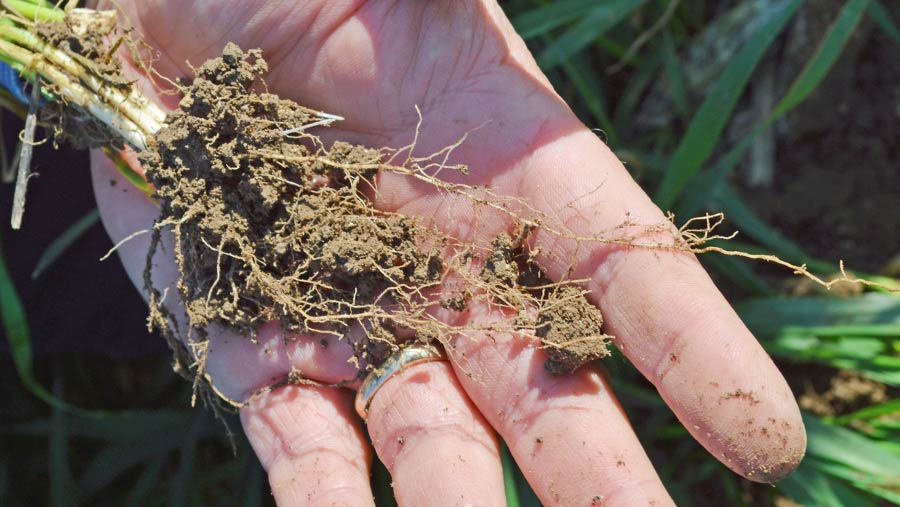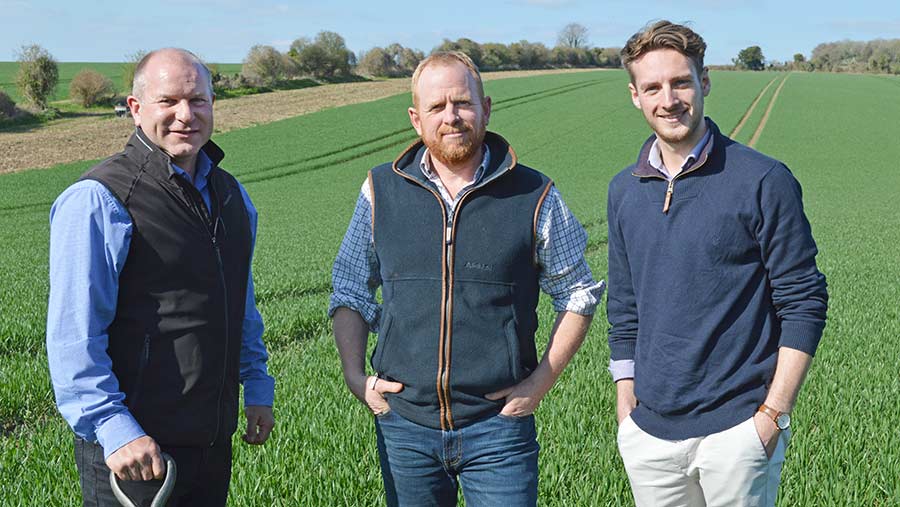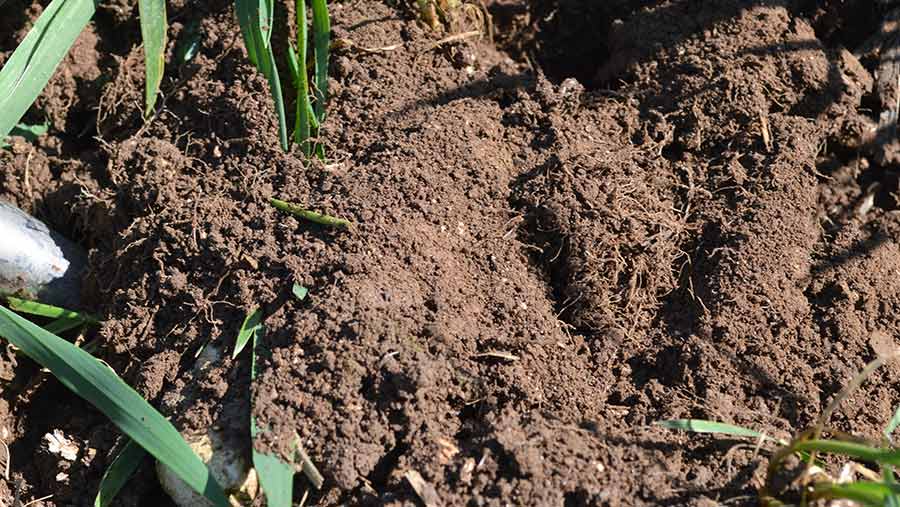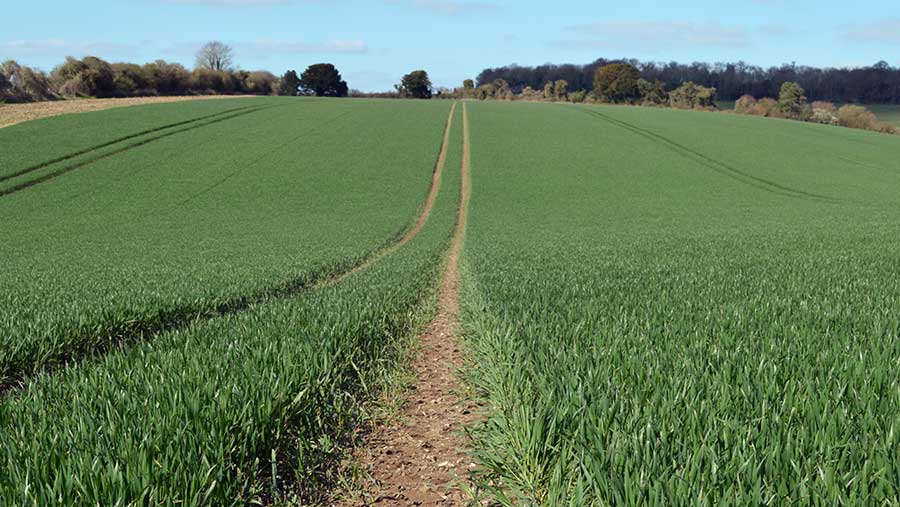How a Wiltshire grower is raising yields with attention to soil
 Chopped straw and manure have improved Mr Parsons' soils
Chopped straw and manure have improved Mr Parsons' soils Edward Parsons is looking to get more out of his soils by chopping straw, adding manure and varying his seed rates, and he is reaping the benefits as wheat yields have edged above 10t/ha, including in last summer’s drought-affected harvest.
He is also carefully tailoring nitrogen fertiliser rates across his Wiltshire loamy chalks to make the most of his soils in fertile valley bottoms and saving money by cutting rates on his thin chalky slopes.
Add in his move away from ploughing and towards variable-rate phosphate and potash applications, and his soils have never looked better and yields are responding.
Farm facts
Templemans Farm, Redlynch, Salisbury
- 355 hectares of predominantly arable land of loamy chalks with clay caps.
- Growing winter wheat varieties Crusoe and Basset, together with winter and spring barley and break crops of linseed and oilseed rape.
“Our soils are really looking good and we are pushing to get more out of them with our yields ahead and more consistent,” he tells Farmers Weekly.
See also: Tips on assessing the health of your soil
Price premium
Mr Parsons’ average winter wheat yields have not fallen below 10t/ha over the past five years, giving gross margins well above £600/ha, while he nearly always gets a price premium for producing 13% protein Crusoe milling wheat.
He and his agronomist Richard Cromie are keen to manage inputs to achieve maximum yields, and that means adapting the lessons of crop consultant Adas’s Yield Enhancement Network (YEN) competition.
Results from high-yielding YEN crops suggest a close relationship between overall biomass, or total crop weight, and final grain yield, so they are using YEN data to improve the farm’s soils which are at best 250mm deep before hitting solid chalk.
Mr Cromie says: “What we are trying to do is to find out the high yield areas and the low yield areas so we can manage inputs to get maximum yields.”
Variable rates
Mr Parsons moved to variable-rate phosphate and potash in 2004 on his 355ha Templemans Farm, Redlynch, six miles south east of Salisbury, and then soon took up variable rates for nitrogen and seed.
His land gets generous applications of chicken muck and other manures ahead of his break crops of oilseed rape and linseed, and only first wheats are grown in a rotation that also includes winter and spring barley.

Richard Cromie (left), Edward Parsons and Nick Lewis on the farm
He is growing 125ha of winter wheats consisting of breadmaker Crusoe and biscuit wheat Basset, but both varieties are become more disease susceptible.
The aim is to drill in early October, late enough to prevent lush disease-susceptible and weak-strawed crops, but early enough to allow autumn drilling across the heavy sticky clay caps on the farm.
Delayed drilling
The delayed October drilling is aimed at preventing early disease development such as Crusoe’s weakness to brown rust and Basset’s susceptibility to septoria.
“Two weeks difference in drilling date can make a big effect on disease levels so we are aiming to go as late as possible,” Mr Cromie says.
Drilling rates are a modest 275-300 seeds/sq m with the aim of producing 600 ears/sq m at harvest rather than the 800 ears seen by some record-yielding crops.
“We are not producing overly thick crops but the grain weighs like lead and so give us a good specific weight,” Mr Parsons says.
Managing inputs
The nitrogen fertiliser strategy is particularly aimed at managing inputs to apply the solid ammonium nitrate at the right time for the crop’s development.
The first nitrogen dose is a relatively modest flat rate of 50kg/ha at the end of February to help with tiller survival, which may edge up to 70kg/ha to encourage backward crops.
Two further doses of 100kg/ha each have different aims. The first at end-March is at a variable rate and looks to manage the biomass. This rate can be varied across the field from a restricted 75kg/ha for forward crops to 125kg/ha to encourage backward ones.
The second dose at end-April is looking to feed for yield and this time the variable rate strategy is reversed: backward crops get a lower 75kg/ha and forward crops with the greatest yield potential receive 125kg/ha.
Milling premium
The milling wheat Crusoe often receives a further 50kg/ha at the flag leaf stage in late May – but only if the cost is worthwhile – the milling premium needs to be at least £8/t to pay for the cost of the extra nitrogen and its application.

Mr Parsons is looking for more information about soils – clearly chopped straw, muck and non-inversion cultivation is helping – and so Mr Cromie’s agronomy group Crop Management Partners is launching its Soil Wise service.
This package will offer clients the ability to improve their soils by looking at soil analysis, water infiltration rates and biological activity in soils.
For the future, Mr Cromie believes growers may have to look at more disease-resistant cereal varieties with the loss of some key fungicides and as resistance to other fungicides builds up.
Fungicide loss
This is highlighted by the banning of the widely used multisite protective fungicide chlorothalonil which is likely to be restricted from the middle of 2020 onwards, leaving a hole in the arable grower’s armoury.
This is a serious loss as chlorothalonil, which has been used since the 1960s, has not shown any sign of diseases becoming resistant, making it very useful in the fight against fungicide resistance.
If disease control becomes more difficult in the future, this may encourage a switch from the farm’s more disease-susceptible varieties such as Crusoe and Basset to more resistant ones such as Zyatt and Firefly.

More difficult disease control may require a shift away from Crusoe
Crusoe is rated just a 3 for brown rust and Basset 5, where 1 is very susceptible and 9 shows good resistance, and while Crusoe has good resistance to septoria at 6.5, Basset is a lowly 5.1.
Disease levels
Nick Lewis of the agrochemicals and seeds group Bayer says disease levels are currently bubbling away despite the dry spring and their development will depend on the weather in the coming few weeks.
He adds that disease control is key to maintaining a good green canopy to help increase yields, especially in wet weather which encourages the spread of the wet-loving septoria.
“We can control drilling date and the choice of variety, but we can not control the weather,” he says.
The T0 fungicide spray applied on the farm in late March was chlorothalonil plus an azole, and the T1 is set to be an SDHI-based mix on the two disease susceptible varieties.
Mr Cromie says the loss of chlorothalonil and the loss of efficacy of both SDHIs and azoles is likely to put even more importance on drilling date and variety choice in the future to control disease.
Winter wheat disease resistance – AHDB Recommended List |
||
| Variety | Septoria | Brown rust |
| Crusoe | 6.5 | 3 |
| Basset | 5.1 | 5 |
| Zyatt | 6.4 | 6 |
| Firefly | 7.0 | 8 |
| Note: 1-9 scale where 1 is very susceptible and 9 is very resistant | ||

